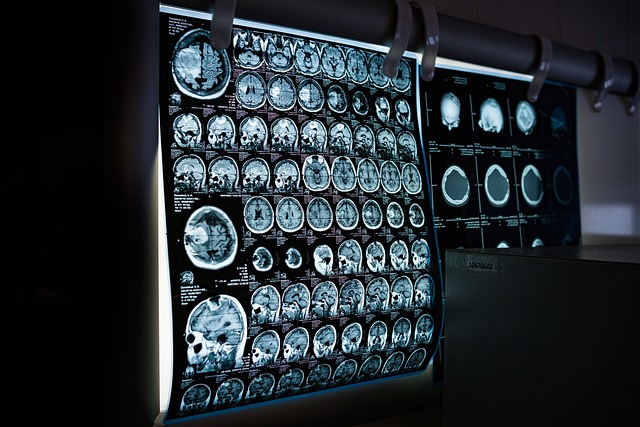Understanding MRI Scanners: Technology, Uses, and Costs Explained
Magnetic Resonance Imaging (MRI) scanners are powerful diagnostic tools that use magnetic fields and radio waves to create detailed images of the body’s internal structures. From detecting injuries and tumors to monitoring chronic conditions, MRIs play a critical role in modern medicine. However, the advanced technology behind these machines comes with a significant price tag, influenced by factors such as magnet strength, software capabilities, and maintenance requirements. Understanding both how MRI scanners work and what drives their cost can help patients, healthcare providers, and institutions make informed decisions about their use.

How MRI Technology Works: From Magnets to Images
MRI technology relies on a fascinating interplay of physics and biology. At the core of every MRI scanner is a powerful superconducting magnet that generates a magnetic field typically 10,000 to 30,000 times stronger than the Earth’s natural magnetic field. This immense magnetic force temporarily aligns the hydrogen atoms in the body’s water molecules. When radio frequency pulses are directed at these aligned atoms, they absorb energy and then release it at specific frequencies when the pulse ends. Sophisticated receivers detect these signals, and computers transform them into detailed cross-sectional images.
The magnet itself is cooled to near absolute zero temperatures using liquid helium, allowing it to conduct electricity without resistance. This enables the creation of the powerful, stable magnetic field necessary for clear imaging. Different tissue types contain varying amounts of water, and therefore hydrogen atoms, causing them to emit different signals. This variation allows radiologists to distinguish between bone, muscle, fat, and other tissues with remarkable precision.
Modern MRI machines also employ gradient magnets that create variations in the magnetic field, allowing for spatial encoding of the signals. This technology enables the creation of three-dimensional images that can be viewed from multiple angles, providing clinicians with comprehensive visualization of anatomical structures.
Why MRI Scans Matter: Benefits for Patients and Healthcare
MRI scans provide several distinct advantages over other imaging techniques. Unlike CT scans or X-rays, MRI doesn’t use ionizing radiation, making it particularly valuable for patients who need repeated imaging over time or for vulnerable populations such as pregnant women and children. The exceptional soft tissue contrast of MRI makes it the preferred method for examining the brain, spinal cord, muscles, joints, and many internal organs.
For patients with neurological conditions, MRI can reveal brain abnormalities that might not be visible on other imaging tests. In orthopedics, MRI excels at showing subtle injuries to ligaments, tendons, and cartilage that X-rays cannot detect. For cancer patients, MRI helps oncologists precisely locate tumors, determine their size, and monitor treatment response. Functional MRI (fMRI) even allows visualization of brain activity, revolutionizing neuroscience research and presurgical planning.
Healthcare systems benefit from MRI technology through improved diagnostic accuracy, which can lead to more appropriate treatments and better patient outcomes. While MRI examinations typically cost more than other imaging methods, their superior diagnostic capabilities often justify the expense by preventing unnecessary procedures and guiding more effective interventions.
Factors That Influence MRI Costs
MRI scans represent a significant healthcare expense, with costs varying widely based on several key factors. The complexity of the examination is perhaps the most influential determinant. Basic MRI scans of a single body part typically cost less than specialized procedures such as functional MRI, magnetic resonance angiography (MRA), or scans requiring contrast agents. Geographic location also significantly impacts pricing, with costs often higher in metropolitan areas than in rural settings.
Institutional factors play a major role in determining MRI costs. Hospital-based imaging centers typically charge more than independent facilities due to higher overhead expenses and facility fees. Insurance coverage critically affects patient out-of-pocket expenses, with some plans requiring substantial deductibles and coinsurance for imaging services. Uninsured patients may face the highest charges, though many facilities offer self-pay discounts.
The technological sophistication of the MRI machine itself influences costs, with newer models featuring higher magnetic field strengths (3 Tesla versus 1.5 Tesla) generally commanding premium prices. Open MRI systems, designed for claustrophobic or larger patients, sometimes carry different price points than traditional closed-bore machines.
MRI Cost Comparison by Provider Type
| Provider Type | Average Cost Range | Typical Wait Time | Potential Additional Fees |
|---|---|---|---|
| Hospital Outpatient | $1,500-$3,000 | 1-3 weeks | Facility fees ($350-$900) |
| Independent Imaging Center | $500-$1,500 | 3-10 days | Contrast medium ($100-$300) |
| Academic Medical Center | $2,000-$4,000 | 2-4 weeks | Radiologist reading ($100-$400) |
| Mobile MRI Service | $400-$1,200 | 1-7 days | Travel fees may apply |
| Veterans Affairs (eligible veterans) | $0-$50 | 3-8 weeks | None |
Prices, rates, or cost estimates mentioned in this article are based on the latest available information but may change over time. Independent research is advised before making financial decisions.
The cost differences between provider types reflect variations in overhead, operational efficiency, and institutional missions. Hospitals typically maintain higher prices due to their comprehensive service infrastructures, while independent imaging centers often operate with streamlined business models allowing for more competitive pricing. Many facilities offer payment plans or financial assistance programs for patients struggling with costs.
Advanced MRI Applications and Future Developments
The field of MRI technology continues to evolve rapidly. Recent advances include higher-field magnets (7 Tesla and above) that enable unprecedented imaging resolution. Artificial intelligence applications are transforming image processing, reducing scan times and enhancing diagnostic capabilities through automated detection algorithms that can identify subtle abnormalities.
Interventional MRI systems now allow surgeons to perform procedures while simultaneously imaging the operative area, improving precision in complex operations. Portable MRI devices, though currently limited in capability compared to their full-sized counterparts, promise to expand access to this valuable technology in emergency departments and resource-limited settings.
Researchers are also developing novel MRI contrast agents that can target specific molecules or cellular processes, potentially allowing earlier detection of diseases at the molecular level. These biomarker-specific imaging techniques may eventually enable more personalized treatment approaches based on detailed understanding of individual disease mechanisms.
As MRI technology continues to advance, balancing innovation with cost considerations remains a significant challenge for healthcare systems worldwide. Nevertheless, the demonstrated clinical value of MRI ensures its continued prominence in medical diagnostics for decades to come.
This article is for informational purposes only and should not be considered medical advice. Please consult a qualified healthcare professional for personalized guidance and treatment.




